Oops! Avoid These National Park Tourist Mistakes
Making any of these national park tourist mistakes can quickly turn an adventure into a lesson in what not to do. I love that more people want to explore the great outdoors, but a little preparation goes a long way.
First-time visitors to national parks often miss important details, like park rules or the weather forecast. However, these oversights can lead to inconvenient, or even dangerous, situations. Staying informed and respecting park guidelines not only protects you but also preserves the parks for everyone to enjoy.
On a quest to visit all 63 U.S. National Parks? Grab your own copy of the printable national parks tracker to check off your progress as you visit each park.
Key takeaways
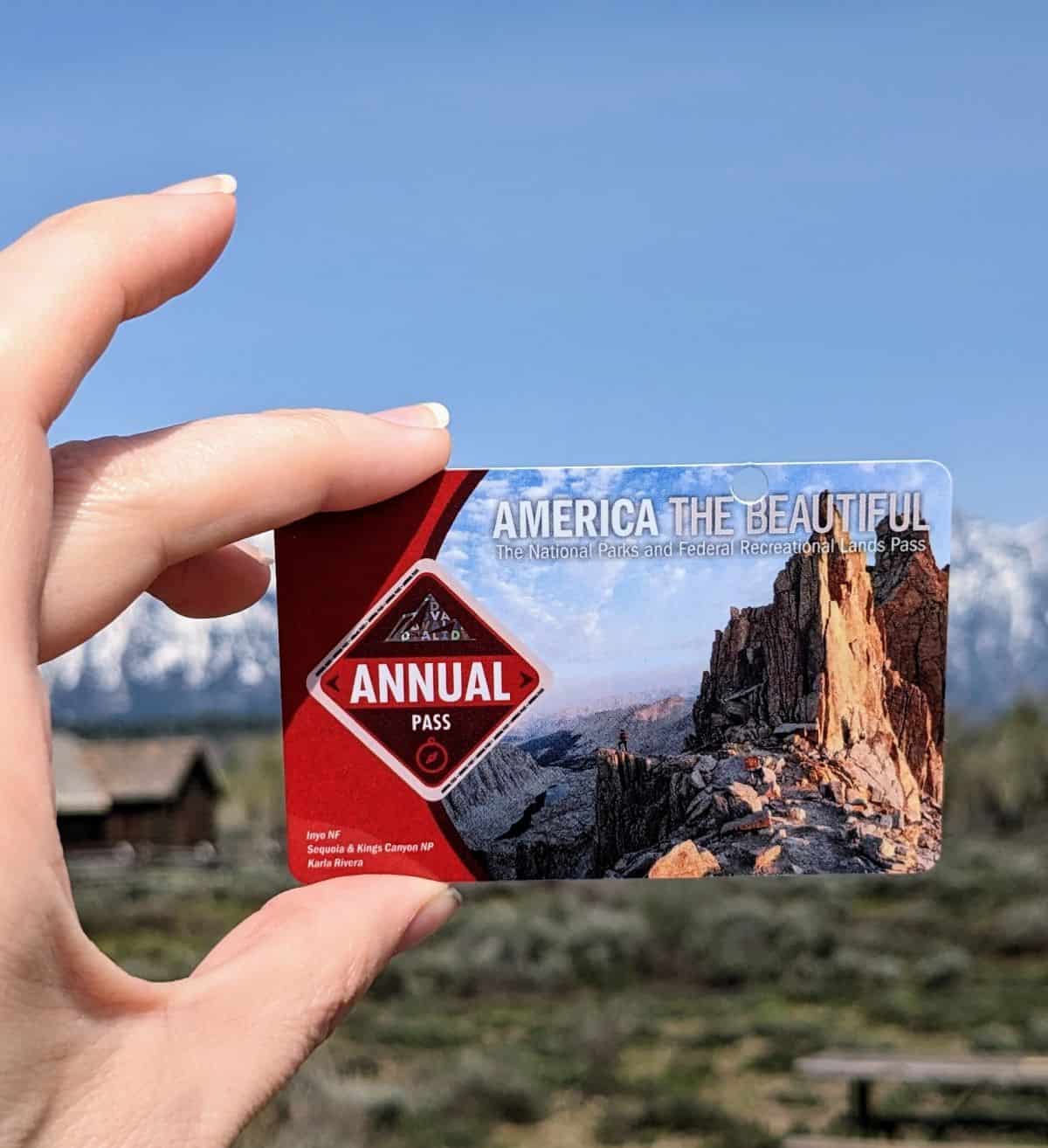
Mistake #1: Not Checking the National Park’s Website for Reservation or Permit Requirements
When you’re gearing up for a trip to a national park, the excitement might make it easy to overlook the nitty-gritty details. But, it’s crucial to remember that several parks now require a reservation to enter or a permit for certain activities. Failing to secure these in advance can turn your adventure into a letdown.
Different parks may require various types of permits or reservations. Keeping tabs is key, as these can vary from park to park and may also change with the seasons.
Make sure to
- Check the park’s official website for the latest reservation or permit requirements.
- Find out when reservations open and the timeframe within which you need to book.
- Find out if having a pass like America the Beautiful affects the need for reservations or permits.
Always book reservations through official channels like Recreation.gov to avoid any mishaps at the park entrance.
Mistake #2: Not Researching Lodging Options Well in Advance
Choosing a place to stay is an important part of planning your national park trip. Inside parks, you can find a variety of accommodations including campsites, cabins, and luxury lodges. Plan early because accommodations in and near popular parks book up fast during peak seasons.
- Book Early: Find out when reservations open for the park you’re visiting and reserve as soon as they open if you can. You may need to book a year in advance for very popular parks such as Yellowstone.
- Consider Alternatives: Look outside the park borders for potential options. These can sometimes save you money and may not be booked as far in advance.
- Understand Park Size: Match your lodging reservations to your itinerary. Larger parks might need a few days to explore, so pick a central location to minimize daily travel time.
- Cancellation Policies: It’s smart to know the cancellation or change policies in case your plans shift.
Rates for accommodations vary widely. Lodges inside the park often cost more because of their prime location and high demand from guests. Some parks offer rate reductions during off-peak times. Keep in mind that lower rates often mean fewer crowds, which can also mean fewer services like dining are available.
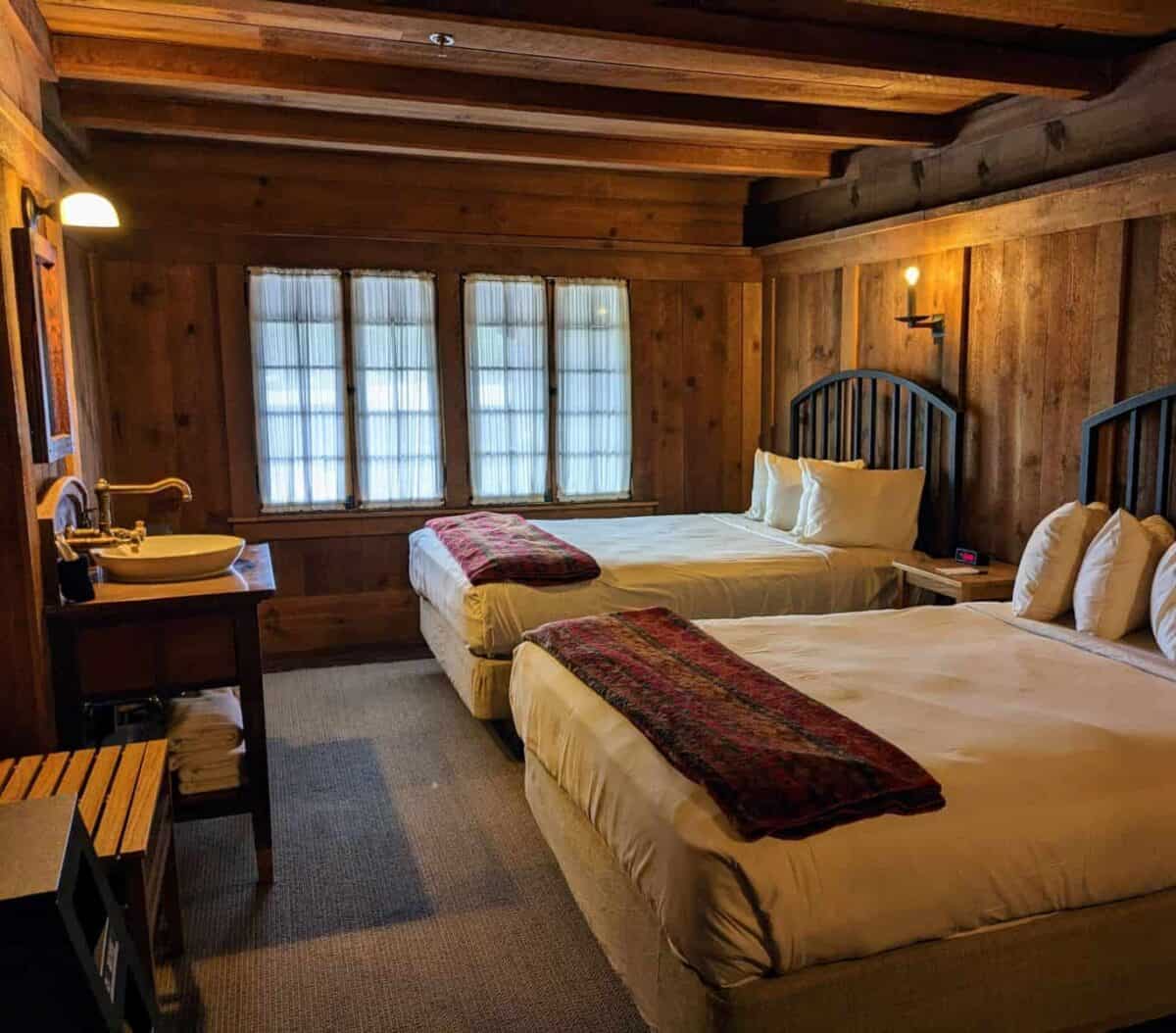
Mistake #3: Trying to Cover Too Much in Your Itinerary
When planning your visit to a national park, you might be tempted to pack your schedule with every hike, overlook, and landmark. It’s natural to want to see it all, but national parks can be vast, and rushing from site to site can make your trip less enjoyable overall.
Rather than trying to visit every attraction, choose a few highlights to create a balance between sightseeing and relaxation.
Select a few key areas and plan to spend quality time at each. Think ahead about what you’re most interested in, whether that’s wildlife, scenic views, or hiking trails. Then schedule these into your itinerary in a mindful way.
Mistake #4: Sticking to Your Plan Too Rigidly
It’s great to have a plan. However, sticking too closely to your plan can cause you to miss unexpected opportunities. Plans are valuable, but so is a bit of spontaneity.
- Be open to trail closures or weather changes. Prepare backup activities in case your original plans are disrupted. When we traveled to Grand Teton National Park at the end of May, we had no idea that many of the hiking trails would still be under waist-deep snow. So we did a Jenny Lake boat tour instead. It was great!
- Talk to rangers. They can offer the latest updates and maybe suggest a hidden gem you didn’t know about.
- Prioritize: Know what you must see but leave gaps in your schedule for exploration.
Mistake #5: Only Visiting the Most Popular Spots
It’s easy to focus on the hotspots that every Instagrammer and travel blog raves about. Sure, they’re popular for a reason. However, only visiting these spots may limit your experience of the park. Many amazing sites are located just off the beaten path.
- Research areas of the park that are less trafficked and add them to your visit.
- Park rangers are a wealth of knowledge, and they can tell you about hidden gems.
- Ask for recommendations from friends who frequently travel to national parks.
- Visiting popular spots at off-peak times like sunrise or dusk can feel like discovering a whole new place.
Check out these Yellowstone hidden gems.
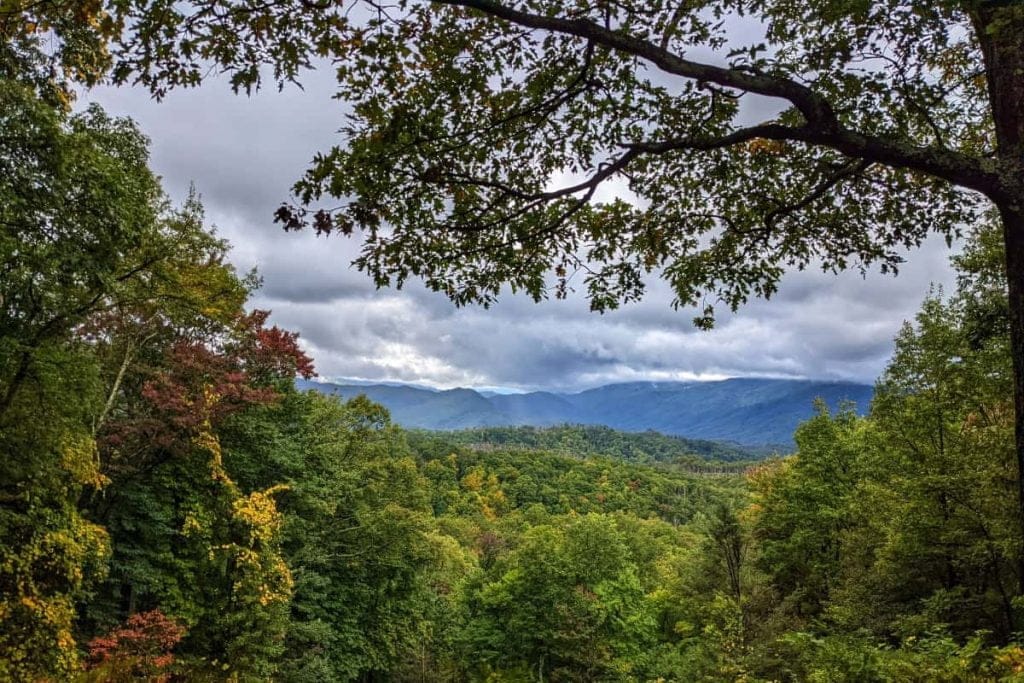
Mistake #6: Assuming You Can Bring Your Dog
When planning a national park trip, you might imagine your dog being right there with you. After all, you’re going to be outdoors, so why not? But, national parks have pet policies in place, and they vary from one park to another. Ensure you review each park’s specific rules before your visit.
Generally, dogs in national parks must be leashed at all times, typically with a maximum leash length of six feet. Many national parks restrict dogs to developed areas, such as campgrounds and picnic spots. Be aware that many parks restrict dogs from trails and backcountry areas.
Mistake #7: Approaching Wildlife
Remember that national parks are home to many wild animals. They’re not there for your social media posts. Getting too close can be dangerous—for both you and them. Always observe wildlife from a safe distance.
If you’re wondering what a “safe distance” means, the National Park Service generally recommends at least 100 yards away from bears and wolves, and 25 yards from other wildlife like elk or bison. This isn’t just for their comfort, but also for your safety.
What to Do:
- Observe Quietly: Use binoculars, spotting scope, or a telephoto lens for a closer look.
- Be Aware of Your Surroundings: Wildlife may not be immediately visible.
- When hiking in bear country, carry bear spray and know how to use it.

Mistake #8: Only Touring the Park in the Middle of the Day
Exploring a national park can be magical, but fighting crowds can lessen that charm considerably. Blocked views, scarce parking, long shop lines, and busy food spots can all create frustration.
Visiting parks early in the morning or later in the day can enhance your experience a lot. And there are benefits beyond just lower crowds. Wildlife, for instance, is more active during dawn and dusk. Touring outside peak hours also reduces the impact on trails and attractions, helping preserve these sites.
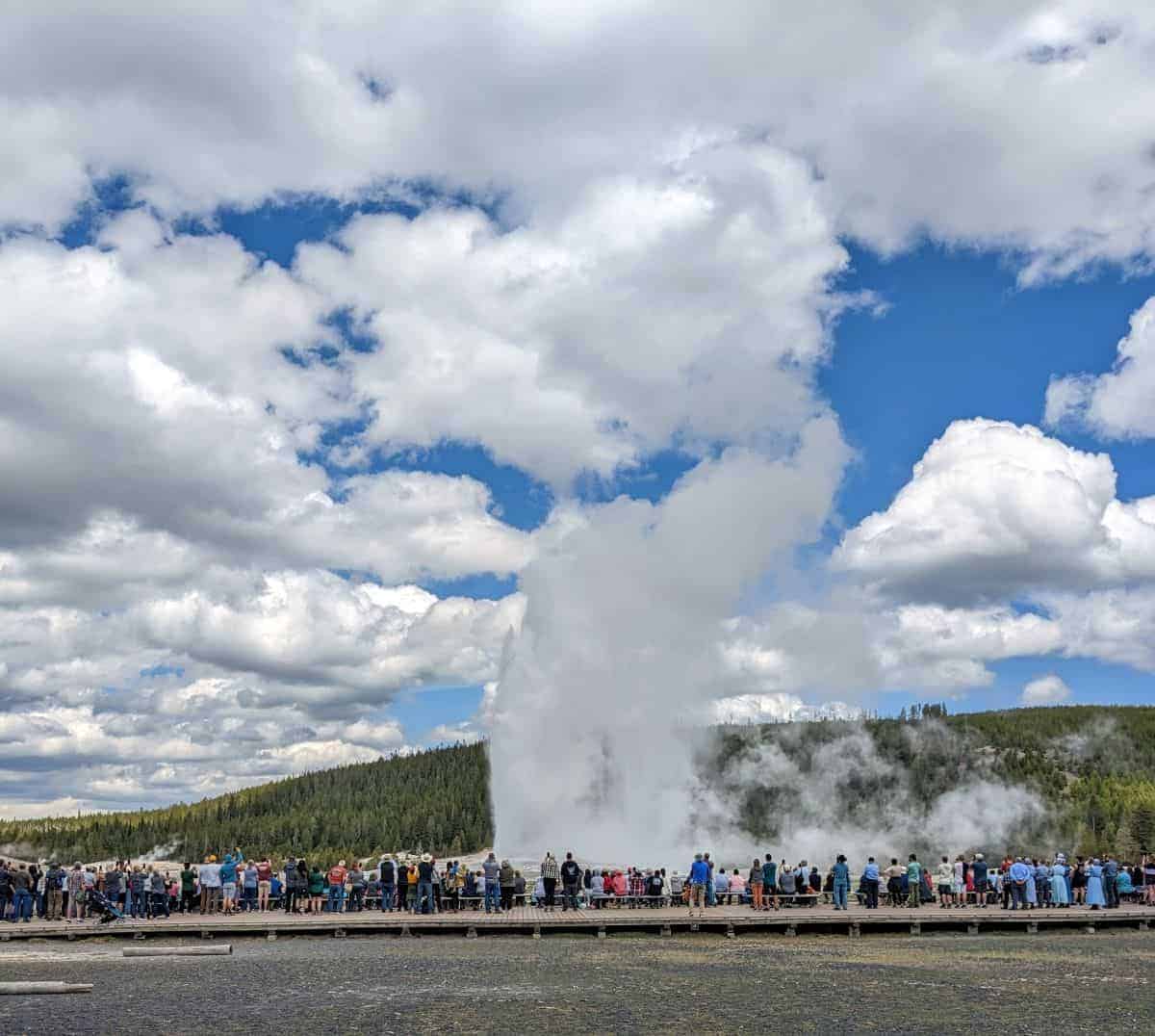
Mistake #9: Not Asking for Advice from Experienced National Park Travelers
While planning your park visit, it’s wise to talk to someone with experience. Seasoned travelers can provide you with a ton of information. Experienced park-goers are often eager to share their stories and tips.
They can help with advice on:
- Where to stay
- Where to eat
- How to save money
- The best places to go for sunrise or sunset
- The best places and times to view wildlife
- Hikes with the best views
- And much more
Mistake #10: Not Dressing Appropriately for the Climate
When you’re packing, checking the weather forecast is crucial. Your comfort and safety can depend heavily on wearing the right clothes. Weather in national parks can change fast, so be ready for anything within a single day.
Remember, you might find higher altitudes in the park cooler than in the surrounding areas. And you might not expect how cold it can get if the park’s climate differs from your home. Make sure your outer layer is waterproof; rain or snow can appear without much warning.

Mistake #11: Overestimating Your Physical Abilities
Before you embark on a national park hike or any activity in the park, be honest with yourself about your physical fitness. And keep in mind things like altitude, hike difficulty, and distance.
Starting a hike without solid preparation can be very risky. Remember, if you get lost or can’t finish your hike, rescuers may have to assist you, which also puts them at risk. Remember, the trails aren’t going anywhere and there’s no shame in short and/or easy hikes.
- Always carry a map and know how to find your way back should you need to end your hike early.
- Be aware of your hike’s length and the time it should take to complete.
- Carry enough water with you. Bring at least 1 liter of water for every two hours you plan to hike.
- Take breaks. Listen to your body, and take a breather if you need it.
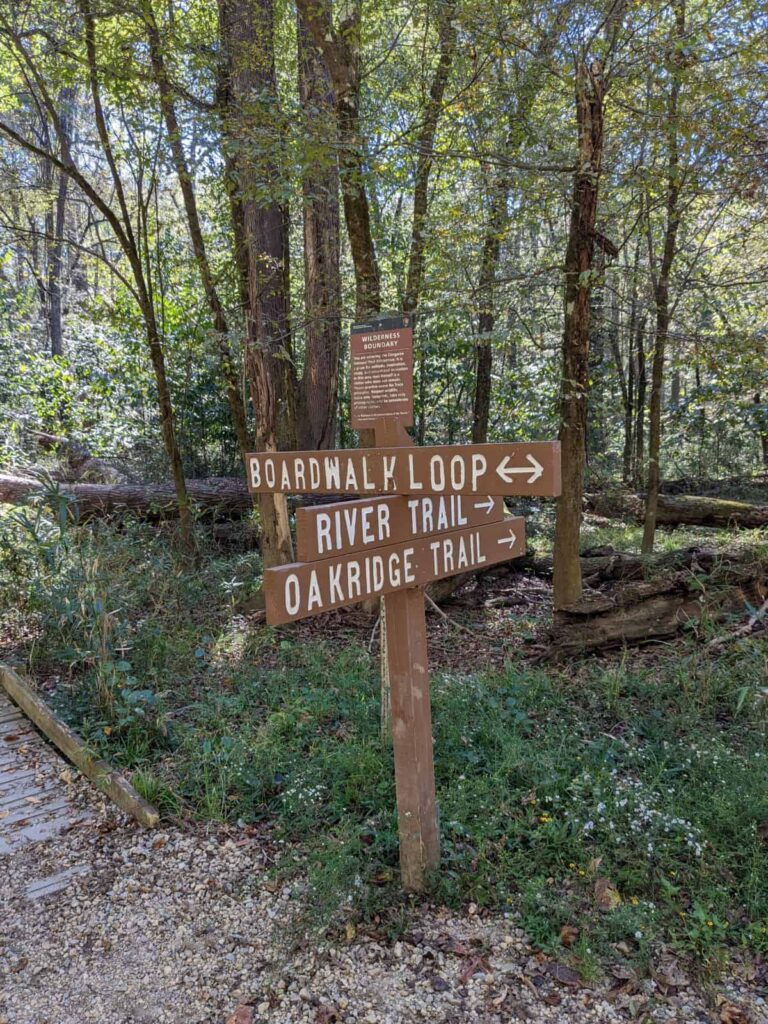
Mistake #12: Making Assumptions About What Services Are Available in the Parks
You might expect national parks to have all conveniences close by, as at home. That is the case for some places. Grand Teton National Park is just a few miles from Jackson, Wyoming, for example. However, parks can lack nearby amenities, so it’s important to know what’s available.
Food
Don’t assume you’ll be able to buy food easily inside a park. Some national parks have limited to no food services or are situated far from the nearest grocery stores. Here’s what you should know:
- Smaller parks may not have dining facilities at all.
- Many parks close all or some food service areas outside of the peak summer travel season.
- I recommend always bringing snacks and drinks.
- It may also be a good idea to bring a cooler so you can pack your lunch each day and keep drinks cold.
I suggest packing a lunch for most days in the park. Even in larger parks with open food services, finding a place to eat can disrupt your plans and you might face long lines.
Gas
Many national parks do not have gas stations inside their boundaries, and those that do may charge much more per gallon than what is available in the nearest town.
- Find out where the closest gas stations are before entering the park.
- It’s best to fill up your tank before your park visit.
Mistake #13: Assuming You’ll Have Cell Service at All Times
National parks often have spotty or non-existent cell reception due to their remote locations and rugged terrain.
What this means for you:
- Without reliable service, GPS and map apps can fail, making it more difficult to find your way.
- You could miss out on important updates from park services.
- Staying in touch with your group or family back home may not be possible.
What you should do:
- Download offline maps before you arrive.
- Always have a physical map as a backup. Even with a strong signal, map apps can give wrong directions in a big national park.
- Inform others about your travel plans and expected return time.
- Look up and note down the locations of emergency phones in the park you’re visiting, if available.
Get ready for a chance to unplug from tech, and you’ll be okay. In fact, you might even enjoy the time not tethered to your phone.
On our trip to Yellowstone, I made the mistake of not telling my family to expect that I wouldn’t be able to respond to their calls or texts for at least a few days. Of course, by the time we entered the park and I lost service, it was too late.
I was anxious for 36 hours until we checked into our Canyon Lodge room and I could use the Wi-Fi. If I had told my family not to expect regular contact, I could have avoided that worry.
Mistake #14: Skipping the Visitor Center
If you’ve heard me say it once, you’ve heard me say it a thousand times: your first national park stop should be the visitor center. At the visitor center, you’ll find informative exhibits, park maps, and the latest updates on road and trail conditions.
- Get your bearings with maps and park literature.
- Ask a ranger about what they recommend you see if you’re a first-time visitor or what trails might be the best fit for your interests and abilities.
- Learn about any current advisories or weather conditions. This can include temporary trail closures due to bear activity.
- Discover scheduled talks or tours by park rangers.
- Get updates on the availability of park services.
- Get your national park passport stamp.
- Find the perfect national park T-shirt or souvenir.

Not stopping by the visitor center means you might miss out on essential information you need for your visit. For example, on our Grand Teton trip, I didn’t expect the trail to be covered in deep snow in late spring or the Jenny Lake shuttle to be closed. Fortunately, I spoke with a ranger our first morning in the park, so I knew what to expect once we made it to Jenny Lake. Many other visitors had not asked a ranger for information and were waiting at the boat dock for a shuttle that wasn’t running.
So, in short, don’t skip the visitor center. The visitor center is a hub of valuable information that will help you be well-prepared for your visit.
You might believe a national park trip needs less planning than other vacations, but actually, it often needs more. Doing research, planning ahead, and being flexible are keys to an enjoyable national park visit. Mistakes can happen, but planning ahead can greatly reduce their impact on your trip.
More articles to help you plan your national park trip
- The best national parks on the East Coast
- Top southern U.S. national parks
- Tips for visiting Yellowstone National Park
- Grand Teton travel tips
- The best national parks in Utah (The Mighty 5)
- Top books about national parks
Pin this post!
